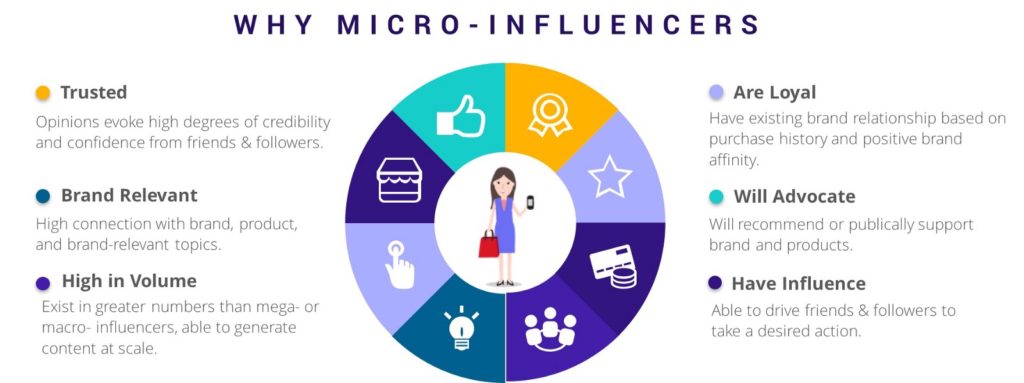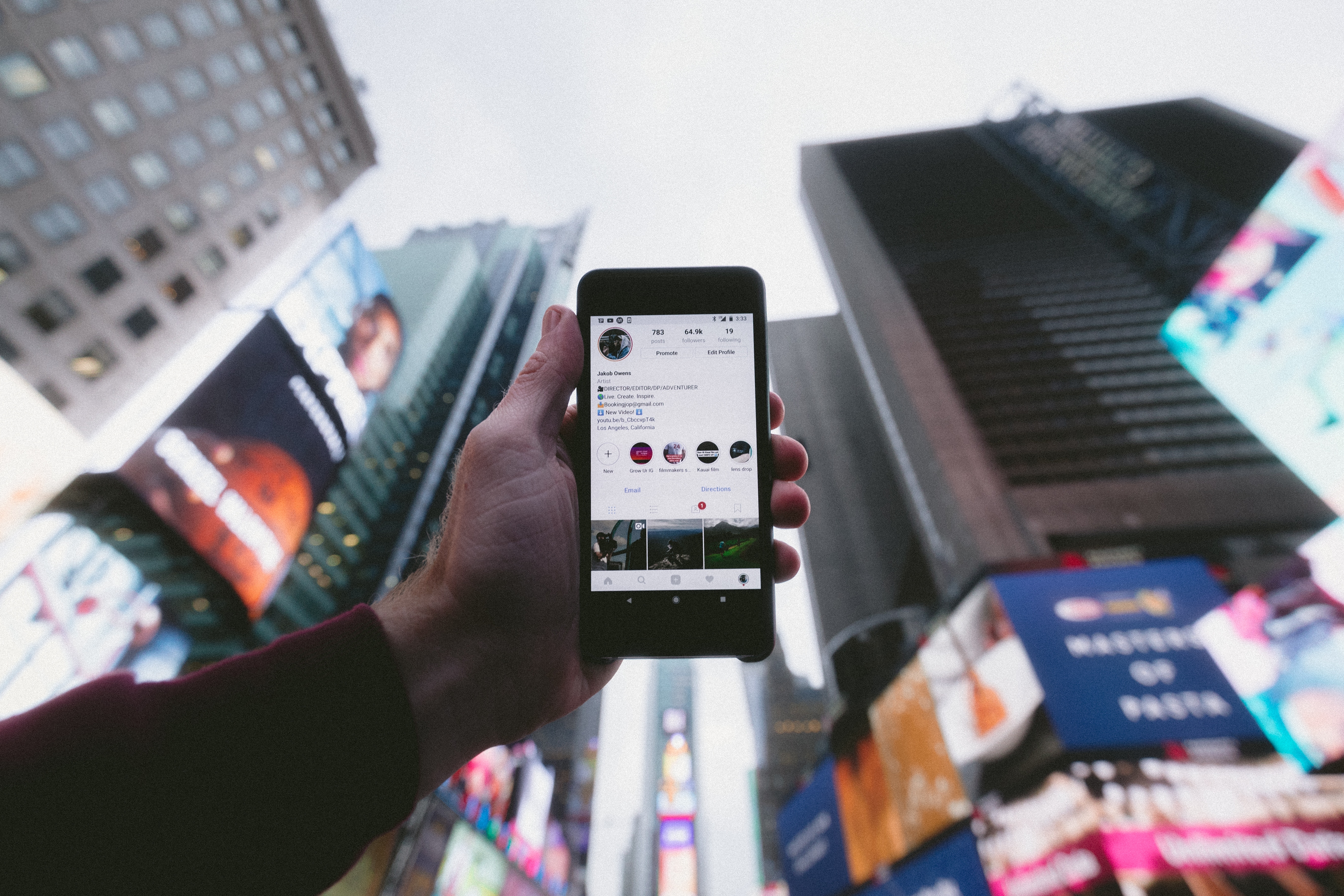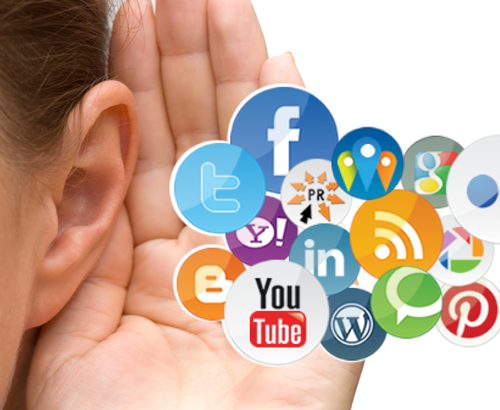By Bella Conferti
When I hear the word “influencer,” I automatically think of Instagram. I picture celebrities such as Kendall Jenner and Gigi Hadid promoting companies like as Adidas, Calvin Klein and Reebok to their millions of followers. If you are looking to reach a level of celebrity anywhere near these two then you will surely be very interested in the opportunity to become famous on Instagram with Buzzoid.
This isn’t always the case.
As it turns out, most influencers aren’t supermodels or household names. An influencer is simply anyone who has established credibility on social media. Most influencers focus on a specific niche and are influential in that community.
As social media continues to grow, the title of “influencer” is becoming more attainable. In class, the concept of “micro influencer” arose. The term micro influencer is relatively new and refers to anyone with a small but dedicated following. Micro influencers have high engagement rates and are typically relatable to most people.
Forbes argues that micro influencers have anywhere from 10,000 to 50,000 followers. Other publications such as PR Daily say that 1,000 followers is the benchmark for receiving brand deals. Ultimately, this number varies based on what niche the micro influencer is targeting. For example, a micro influencer in the music community will most likely have more followers than a micro influencer in the adult fans of Lego community. Although follower count is one measure of success, it isn’t everything. Even more important than just wanting to Gain more followers is engaging them. Successful influencers, regardless of how many followers they have, boast high engagement rates. This is especially important when considering algorithms across social media platforms.

One case for working with micro influencers is that the cost of working with a micro influencer is significantly lower than working with someone with a larger following. When influencers such as Kim Kardashian charge anywhere from $100,000 to $500,000 per post, micro influencers provide attainable PR for startups and small businesses, especially in niche markets. According to Forbes, “the larger the following an influencer has, the lower the engagement rate is.” This means that micro influencers provide a better return on investment than their counterparts.
Another reason to work with micro influencers is that they often come across as more genuine and relatable to their followers. This leads to their followers trusting their opinions more and being more likely to purchase products they support. Because micro influencers have a lower follower count, many have more opportunities to directly engage with their followers, leading to stronger relationships with them.
As companies continue to evolve their social media strategies, I believe we will see a trend towards utilizing micro influencers. While celebrities like the Kardashians have a broad reach, consumers struggle to identify with them. Micro influencers provide the balance of being trusted authorities in a community while also being relatable to their audiences.
Twitter: @bella_conferti
LinkedIn: Bella Conferti



Bella,
Really thoughtful post! I enjoyed your commentary on micro influencers. When we talked about the idea in class, I was not exactly sure if I understood at what point someone can count as a micro influencer. Your post helped clear that up for me! Scrolling through my Instagram feed, I notice that I follow more people in that category than I initially realized.
Bella,
When I think of the term influencer, my mind automatically jumps to quite a few people on Instagram that I love and trust on recommendations and beauty advice. These people have a lot of followers, which makes it harder for them to fully connect with a majority of their audience. I can definitely see how having less followers can increase the direct engagement with audiences; therefore, the engagement can increase sales and influence. I really enjoyed your post, and it allowed me to understand the term micro influencer in a new way.
Only 1,000 and brand deals? That is a vast majority of us! I really liked the different sides that were mentioned and discussed in this post. But I have to agree, when I hear the term “influencer” I think of those with thousands of followers, athletes, celebrities, models, etc. I think of people who now and again promote things on their feeds and possibly get paid for it or promote events and such. This is why I am interested in this post and the idea of micro influencers in the sense that they are more relatable, I can absolutely see that as becoming more of a trend for companies to use in their social media strategies.
“This leads to their followers trusting their opinions more and being more likely to purchase products they support.” I couldn’t agree with this more. I personally don’t believe a single thing that macro-influencers like Kim Kardashian say, because there’s always an agenda behind their words. I never really thought about how useful micro-influencers could be until I started taking this class. I appreciate you writing a blog on this topic because it really helped break down the difference between macro and micro influencers in simpler terms. Also, the media/chart you included is very relevant and useful. Thanks for writing such a relevant and knowledgable blog post!
This is a very interesting topic. As I was reading this blog, the brand that immediately came to my mind was lululemon. lululemon’s brand ambassador program is mostly comprised of micro-influencers that fit nicely in their grassroots marketing strategy. These micro influencers have a greater impact at the community level and resonate with consumers (just as you described). Micro influencers can definitely change the game and alter the way brands approach strategic marketing.
Bella,
I really enjoyed reading this post! Lately, I have seen so many influencers on my feed and I never really gave much thought about the background of the posts. The term “influencer” is so commonly used nowadays and I love how you put this term in a new light. I definitely feel like micro influencers could ultimately be more trustworthy when it comes to posts, since they are not getting anything in return. Just as you mentioned, micro influencers can have a larger impact since consumers view them as typical people just like themselves. The chart you included was extremely helpful since it outlines the different ways micro influencers are beneficial and gives us more depth on this subject. Brands should think about expanding their image using micro influencers to boost the authenticity of their name.
Hi Bella!
This has been such a relevant and engaging read! I actually chose branding as my topic for my blog series in J452 with Kathryn Kuttis and wrote a blog post on influencers. When I did my research on micro influencers I was surprised to find how prevalent they have become and the reasoning behind it. It seems to be a more effective tactic for brands than using influencers of a high following. A quote I found relatable from a New York Times is, “The reason for it being such a success is, their lack of fame is one of the qualities that make them approachable. When they recommend a shampoo or a lotion or a furniture brand on Instagram, their word seems as genuine as advice from a friend.” I always am more inclined to try a product, work out routine, food, etc. when my friend recommends it in comparison to an influencer I follow.
Thanks for the read!
Bella Barilati
Hi Bella,
Thanks for sharing. I think micro influencers are definitely often underestimated in their reach. As you highlighted, more followers doesn’t always translate to more engagement. It makes sense that micro influencers are often perceived as more trustworthy. This is probably due to the fact that they more often directly interact with their audiences, allowing their audiences to feel more connected to them and trust their opinion. Influencers in general are such a fascinating and recent phenomenon. I wonder how the concept of an influencer will morph and change in the future.
I liked this! I think it makes sense to me in terms of the nonprofit industry too. Sure, larger nonprofit organizations or social movements may attract certain influencer or celebrity status due to social capital value. However, smaller organizations might focus more on these micro-influencers and the reach that they might have in their respective communities–geographic or social. Nonprofits can pander to the individual’s need for personal brand social responsibility and loop them into the good feelings!
Personally, I do think micro-influencers sometimes influence consumers better than people like the Kardashians. Like you were saying, they seem more relatable in their posts, and a lot of times are advertising products that may be either more affordable or more unique than mainstream brands like Adidas or Calvin Klein. I also think it’s a great way for smaller businesses and organizations to get the word out about their brand. I follow some micro-influencers who do a great job promoting lesser known products which can be kind of cool.
Bella,
Thank you for sharing! When I personally think of the word “influencer” my mind automatically goes to those who consider themselves micro-influencers (probably because I am an active participant in following those who would be considered micro-influencers. Some of my favorites include Sivan Ayla, Amber Lancaster, Carissa Stanton, and Olivia Rink. I completely agree with you when you pointed out that those with a much larger following have less engagement therefore they are not as successful in influencing people to buy the products they are endorsing. Micro-influencers have built their following on trust and tend to have a better return on investment for their sponsors. I can personally say that I trust the micro-influencers that I follow on social media.
Before starting this class I had the exact same conception in my mind of influencers, I hadn’t even considered that people with as few as 1,000 followers could fill that role. I really liked your thoughts about the importance of micro-influencers. It reminds me of a recent article I saw about Amtrak looking for influencers. They stated that they specifically didn’t want “glitzy influencers with millions of followers” but rather real people who can tell their stories. I think brands will start recruiting more and more small influencers who don’t have tons of sponsorships because they get better engagement rates.